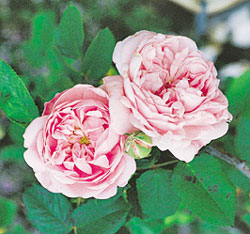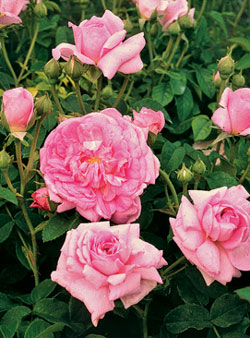Rose Cuttings: January 2015

‘The Apothecary Rose’. Photos courtesy of Mike Shoup.
by Mike Shoup
Old European Roses

‘Fantin Latour’
The mainstay of European gardens, old European roses have been important players in the story of Western civilization. Damask petals filled banquet halls in the Roman Empire. Gallicas such as ‘The Apothecary Rose’ appear throughout medicinal lore. A white Alba rose, ‘House of York’, and a red Gallica, ‘House of Lancaster’, were heraldic symbols of the warring dynasties who fought England’s Wars of the Roses. When Henry Tudor finally ended the conflict, his herald contained a red and white blossom — the Tudor Rose — as a symbol of reunification.

‘Ispahan’
The Centifolias acquired that name from their hundred-petaled blossoms, which have heady fragrances. These shapely flowers also earned the plants the nickname “cabbage roses” and made them a favorite of still life painters for centuries. The beautiful ‘Fantin Latour’, which honors a 19th century French painter who loved roses, is a perfect example.
‘Ispahan’, a perfumed Damask, is still found in the walled gardens of Shiraz and Isfahan in Iran, where plants and pools provide respite from the hot, dry land outside. It’s used to make attar of roses, the essential oil indispensible to the perfume industry.
In spring, these ancient ladies don’t just fascinate with their stories; they inspire swoons with their heavily laden canes of fragrant blooms.

